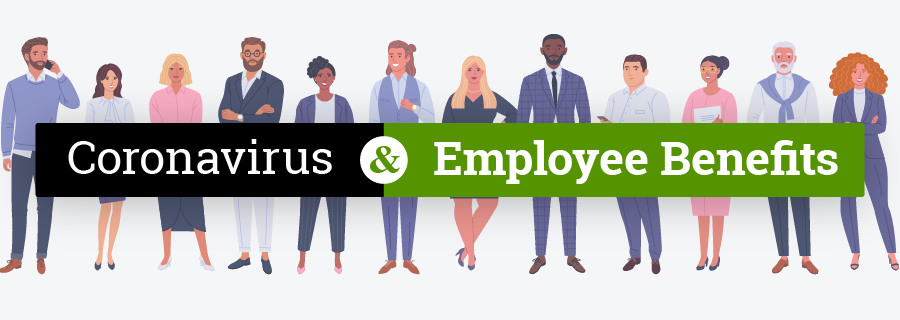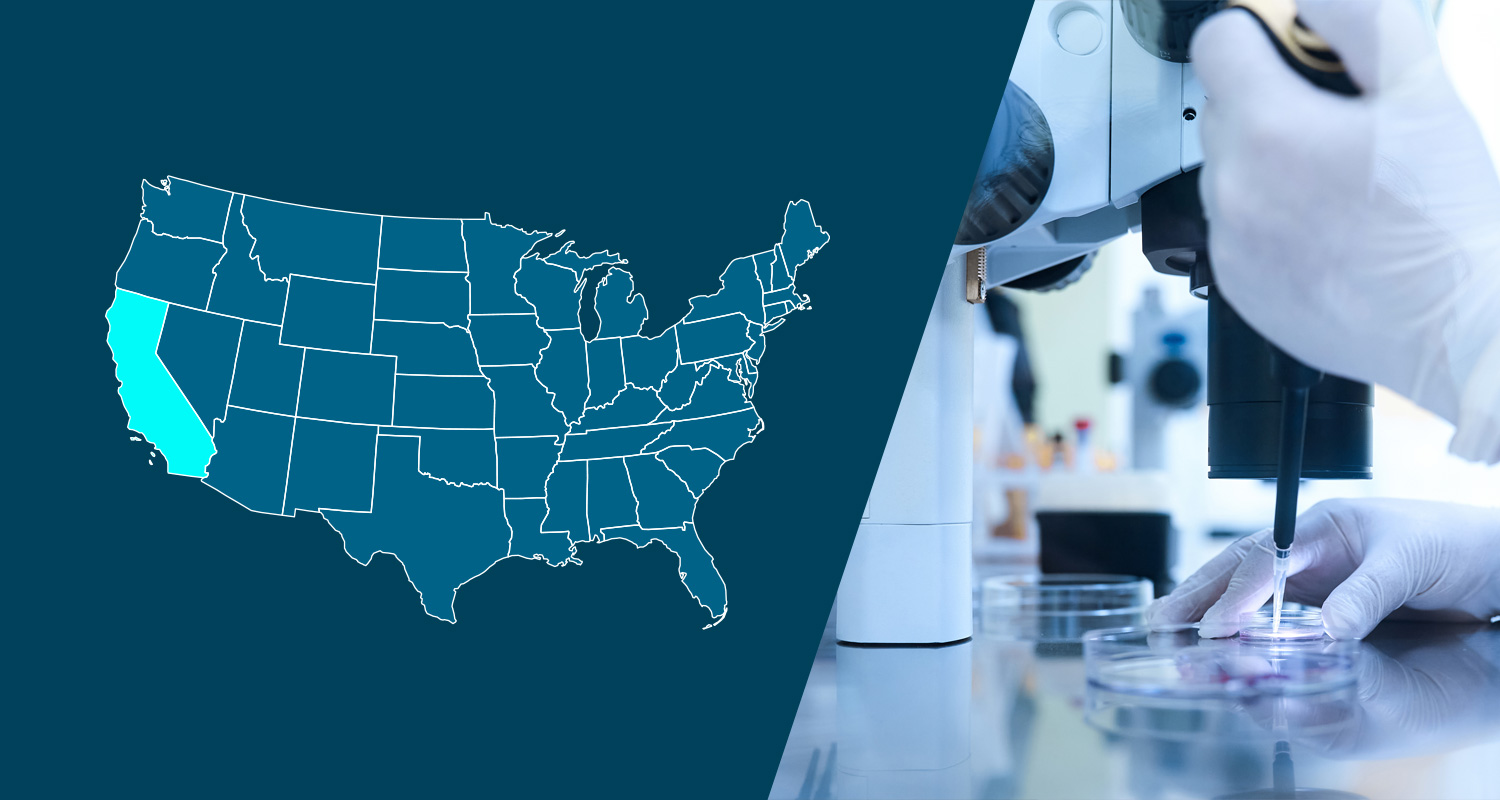UPDATED May 15, 2020 with new IRS guidance (Notices 2020-29 and 2020-36 issued on May 12, 2020), which provides employers with the option to amend their Section 125 Cafeteria Plan documents to allow their employees to: (1) make mid-year election changes to their healthcare coverage, health FSA, and/or dependent care FSA during calendar year 2020; (2) apply unused FSA and DC FSA amounts to claims incurred through December 31, 2020; and (3) carryover up to $550 in unused FSA funds onto the 2021 plan year.
Employers may be looking for options on how to provide benefits to employees while balancing the economic concerns brought on by the coronavirus (COVID-19) outbreak. We have outlined several strategies below that employers can implement in response to today’s unique challenges:
-
- Provide coverage to un-insured employees and/or their dependents;
- Change benefit options or premiums, allow mid-year changes, or extend claims timelines for existing employees; and/or
- Provide benefits continuation or subsidies to employees whose hours are reduced, who are furloughed, or who are laid off.
Employer Options for Covering Uninsured Employees
Many employers are concerned about employees who are not eligible for employer-sponsored benefits or who declined benefits during open enrollment. In light of COVID-19, employers may want to consider the following:
1. Changing Benefits Eligibility
If permitted by their carrier, employers can consider changing the eligibility rules for their healthcare plans so that more employees are eligible to be covered. For instance, employers may want to extend healthcare eligibility to their part-time employees. Employers should first seek carrier approval for any changes and may need to subsequently amend plan documents to reflect any new eligibility rules. The change in eligibility would trigger a special enrollment period for newly eligible employees and would likely result in a larger number of employees covered under the employer healthcare plan.
2. Allowing Mid-Year Enrollment
Due to the COVID-19 outbreak, many insurance carriers are allowing a short special enrollment period (SEP) that would allow employees (and/or their dependents) who previously declined coverage to enroll mid-year. Fully insured employers who want to allow for this mid-year SEP should reach out to their carriers for further guidance. Self-insured employers who want to allow for a COVID-19 SEP should ensure that their stop-loss carrier will allow for this mid-year enrollment before implementing any changes.
Normally, a health care emergency (such as COVID-19) is not a permitted “qualified life event” that would normally allow for mid-year enrollment under IRS Section 125 rules. However, on May 12, 2020, the IRS issued Notice 2020-29, which gives employers the option amend their Section 125 Cafeteria Plan documents to allow their employees who previously declined coverage to enroll during the 2020 calendar year, regardless of whether they experience a “qualified life event” under Section 125. Employees who enroll during a SEP would be able to pay for their coverage on a pre-tax basis.
If an employer already permitted a COVID-19 SEP prior to the date IRS Notice 2020-29 was released (May 12, 2020), employers can retroactively amend their Cafeteria Plan back to the date of the special enrollment (or January 1, 2020 at the earliest). This retroactive amendment would mean that enrollments that were made during the COVID-19 SEP were consistent with the employer’s Cafeteria Plan and allow employees who elected coverage during that time to pay for their healthcare on a pre-tax basis.
3. Government-Provided Healthcare
States and the federal government have expanded access to healthcare and COVID-19 testing to un-insured individuals. Employers may want to point out these government-provided options to their un-insured employees.
Families First Coronavirus Response Act (FFCRA): The federal government recently passed a law that reimburses un-insured individuals for laboratory costs associated with COVID-19 testing. In addition, the law allows states to extend their Medicaid eligibility to un-insured individuals for purposes of COVID-19 testing. For more on the FFCRA, see our blog and the Department of Labor FAQs.
Open Enrollment through State Exchanges: Eleven states and the District of Columbia have opened a special enrollment period for individuals to sign up for individual healthcare coverage through the state exchanges (commonly known as Obamacare). These state exchanges are allowing individuals who are un-insured or who lost their employer-sponsored coverage to enroll in individual coverage.
The Coronavirus Aid, Relief, and Economic Security (CARES) Act: On April 3, 2020, the White House announced that it plans on reimbursing hospitals and healthcare providers for treating uninsured individuals for COVID-19. Healthcare providers would be reimbursed at Medicare rates using a portion of the $10 billion in funds allocated to hospitals under the CARES Act. As a condition of payment, healthcare providers will be prohibited from billing the uninsured individuals. Additional details on this program should be forthcoming. For more on the CARES Act, see our blog.
Employer Options for Existing Employees
1.Increasing Contributions to Employee Healthcare Premiums
Employers always have the option of increasing the amount they contribute towards employee healthcare benefits.
If employers want to pursue this option, they must treat similarly situated employees the same and should be careful not to discriminate based on a prohibited class (such as based on health-related factors or based on gender, race, etc.). In addition, employers should check with their carrier and get approval for the change and communicate changes to employees.
If the employer’s increased contributions to healthcare premiums causes a significant cost decrease to employees and a “significant change in cost” is a permitted status change event under the employer’s Section 125 Cafeteria Plan, employees may be able change their pre-tax elections. Employers have the discretion to determine whether a “significant change in cost” has occurred based on the relevant facts and circumstances. If the employer determines that the change was “insignificant,” they can automatically change employees’ premium contributions and employees will not have the ability to change their elections.
If the employer decides a significant change in cost occurred (due to a cost decrease), employees could elect healthcare coverage, switch from employee-only to family coverage, switch from a low tier to a high tier plan, or any combination thereof.
2. Decreasing Contributions to Employee Healthcare Premiums
Employers may face a potential Affordable Care Act (ACA) penalty if they decrease contributions to premiums and it causes their plans to become “unaffordable.” As a reminder, the ACA requires applicable large employers or “ALEs” (those with 50+ full-time and full-time employees in the prior year) to offer affordable minimum value healthcare to their full-time employees and their dependents or face a potential penalty. For 2020, coverage is considered “affordable” if employees can purchase employee-only coverage for less than 9.78% of their household income.
Further, if an employer decreases their contributions to healthcare premiums and it causes a “significant increase in cost” to employees, employees may have the option to change their healthcare election if the employer’s Cafeteria Plan allows for this. As discussed above, employers can decide whether the change in cost to employees was “significant” or “insignificant.” If the employer decides that the change is insignificant, the employee can automatically increase employee’s pre-tax deductions and not allow employees to drop coverage. Alternatively, if the employer does permit changes, employees could switch to a cheaper plan or drop coverage altogether.
Important Note: Some employers have been cutting employee salary in response to the economic hardships caused by COVID-19. A change in salary, by itself, is not a permitted change event under the Section 125 rules.
3. Making contributions to Health Savings Accounts (HSA), Health Flexible Spending Accounts (FSA), or Dependent Care FSAs (DC FSAs)
Employers can make pre-tax contributions to employees’ HSA, FSA, or DC FSA as long as they don’t exceed the IRS limit. However, employers cannot discriminate in favor of key employees or highly compensated employees when making contributions.
Both employee and employer contributions count against the IRS pre-tax limit for benefits, so employers may not be able to contribute pre-tax amounts to employees’ accounts if they already elected the IRS maximum. Employer contributions over the IRS limit would result in taxable income for the employee.
- HSA: Employers may make pre-tax HSA contributions to employees and former employees as long as they have reason to believe they are HSA-eligible (i.e. enrolled in an high deductible health plan (HDHP) and not covered under a non-HDHP plan) and the contribution doesn’t cause employees to exceed their IRS limits. As mentioned above, employers should make the same contributions to similarly situated employees. It is notable that the IRS recently extended the deadline to make 2019 HSA contributions to July 15, 2020, meaning that employers can still contribute additional HSA contributions to employees who did not reach their 2019 limit. For additional information, see our blog.
- Health FSA: For a health FSA to remain an “excepted benefit” not subject to Affordable Care Act requirements, employers cannot contribute more than twice the amount the employee elected to contribute to the FSA or, if the employee’s contribution is less than $500, the employer contribution cannot be more than $500. For example, an employee who contributes $1,000 can receive up to $1,000 from their employer, but an employee who contributes $350 cannot receive more than $500 from their employer. These limits should be kept in mind by employers when deciding whether to make contributions to employees’ FSAs.
- DC FSA: Employers contributions should not exceed the IRS maximum, which is $5,000 for individuals or married couples filing jointly (or $2,500 each for married couples filing separately), and includes both employee and employer contributions. Any additional employer contributions should be made on a uniform basis.
Employers may need to amend their Cafeteria Plan to reflect the additional amounts contributed to employees’ accounts.
4. Providing a Post-Tax Stipend or Cash
As always, employers have the option of providing employees with a stipend or taxable cash bonus. These stipends will be considered additional wages to employees and will be subject to income withholding and employment taxes.
5. Permitting Special Mid-Year Election Changes or Enrollments
On May 12, 2020, the IRS released Notice 2020-29 in response to the coronavirus (COVID-19) health emergency. The Notice gives employers the option to amend their Section 125 Cafeteria Plans to allow eligible employees to make prospective mid-year election changes to their healthcare coverage, health FSA, and/or DC FSA during the 2020 calendar year, regardless of whether there is a “qualified life event” under the usual cafeteria plan rules. The changes may include any of the following:
- Group health plans (fully insured, self-insured, or level funded):
- Employees may enroll if they initially declined coverage;
- Employees may change their coverage (e.g. switch from self-only coverage to family coverage and/or switch plans); and/or
- Revoke their coverage, though only if the employee attests in writing that they are enrolled in or plan to immediately enroll in other health care coverage.
- Health FSAs/Limited Purpose FSAs/Dependent Care FSAs:
- Revoke an elections
- Make a new election, and/or
- Increase or decrease an existing election.
Important Note: Employers are permitted, but not required, to allow for the changes outlined in the Notices. Employers who allow for these mid-year election changes may determine when such election changes are permitted and applied. Employers should check with their carrier (if fully insured) or their stop-loss carrier (if self-insured) to determine whether these mid-year changes will be permitted. In addition, employers must amend their Cafeteria Plan documents to allow for these mid-year changes and notify their employees of the new allowances. For additional information, see our blog article.
6. Extending Claims Period for FSAs and DC FSAs
IRS Notice 2020-29 gives employers the option to provide employees the opportunity to spend unused amounts in their health FSAs and DC FSAs (and avoid forfeiting these amounts) under certain circumstances. The Notice permits employers to amend their plan documents to allow employees who have unused amounts at the end of their plan year (or grace period, if applicable) to apply those funds to claims incurred through December 31, 2020. This relief applies to all health FSAs (including limited purpose health FSAs) and DC FSAs whose grace period or plan year ends in 2020, regardless of whether the plans already have a grace period or carryover provision in place.
Important Note: It is up to the employer whether they want to implement any of these permitted changes to their health FSAs and/or DC FSAs. Employers should work with their health FSA and DC FSA vendors to implement any of the new changes regarding mid-year elections/changes, extension of claims, and/or increase in carryover amounts. In addition, employers must amend their Cafeteria Plan documents to allow for these mid-year changes and notify their employees of the new allowances. For additional information, see our blog article.
7. Increasing the Carryover Amounts for DC FSAs
The IRS issued Notice 2020-33 on May 12, 2020 in response to COVID-19. The Notice allows employers to increase their health FSA carryover amounts based on inflation (an additional 20% of the maximum FSA salary reduction for that plan year). For the 2020 plan year, the maximum carryover amount can be increased from $500 to $550 (which is an additional 20% of the 2020 FSA salary reduction limit of $2,750). This would allow employees to carryover up to $550 of unused amounts from plan years beginning in 2020 into the 2021 plan year. Employers must adopt an amendment to allow for the increased carryover amount and notify their employees of the changes. Employers should work with their FSA vendor to implement the increase carryover. For additional information, see our blog article.
Employer Options During a Reduction in Hours, Furlough, or Reduction in Force
Due to the economic impact of COVID-19, employers may be forced to reduce employee hours, furlough (i.e. mandate unpaid time-off for) employees, or undergo a reduction in force. Below we explore employer options under these circumstances:
1.Continue Benefits for Employees who are Furloughed or have Reduced Hours
Employers may want to continue benefits for employees who have their hours reduced or who are furloughed. Employers may need to seek carrier approval to provide benefits continuation to these employees if their plan documents do not allow for this. With carrier approval, employers can amend their plan documents and allow for coverage continuation for a specified period. For more on what steps employers must take for benefits continuation, see our blog here.
2. Continue Benefits for Laid Off Employees
Employers may want to continue providing benefits for employees who are laid off. Normally, plan documents dictate that employees will lose coverage if they are terminated; however, some carriers are allowing employers to continue active healthcare benefits for employees who are laid off due to COVID-19, as long as they continue to receive healthcare premiums. Employers should reach out to their carrier to determine whether they will allow laid off employees to continue active healthcare benefits under their plan. If the carrier allows this, employers should determine how much they will continue to contribute to these employees’ healthcare premiums and for how long.
3. Terminate Active Coverage and Provide COBRA Continuation Coverage
A loss of coverage due to a reduction in hours (such as a furlough or layoff) is a COBRA qualifying event. In other words, employers are required to offer COBRA continuation coverage to employees who experience a loss of coverage due to a reduction in hours, furlough or lay off. In addition, employers must also send out a COBRA election notice and administer COBRA benefits to these employees within the required time frames. Many employers work with a COBRA vendor to assist with COBRA administration requirements. For additional information, see the Department of Labor FAQs on COBRA Continuation Coverage.
4. Terminate Active Coverage and Subsidize COBRA Coverage
COBRA premiums cost up to 102% of the cost of coverage. Employers can, but are not required to, subsidize all or a portion of the COBRA coverage for their employees whose hours are reduced or who have been laid off. If employers decide to do this, employers should determine how long they will provide COBRA subsidies and communicate this to their employees. Some employers do this as a part of their severance agreements.
Employers can also set up a repayment program for returning employees whereby they cover their COBRA premiums while they are on furlough with the understanding that employees will pay back the premiums once they return.
Tax Considerations:
- Employers can pay for federal COBRA premiums on a pre-tax basis if (1) they are paid directly to the carrier or (2) paid to the employee only after they provide a proof of payment.
- Employers can also give employees a COBRA subsidy (i.e. cash) without requiring proof COBRA premium payments, but these amounts would be taxable and need to be imputed onto employees’ W-2.
Important note for self-insured employers: Offering COBRA subsidies may result in nondiscrimination testing issues for self-insured employers if subsidies are only being given to highly compensated employees. If the subsidy is offered consistently for all employees, including both highly compensated and non-highly compensated employees, it should not be an issue.
Conclusion
Employers may want to consider these strategies in reaction to the COVID-19 health emergency:
- For un-insured employees: Employers can consider allowing more employees to enroll onto their healthcare plans (with carrier approval) or they can direct employees to the recently-expanded government-provided healthcare options.
- For existing employees: Employers can change their contribution strategy for healthcare premiums, make contributions to employee HSA/FSA/DC FSA accounts, provide employees with a post-tax stipend, allow employees to change their healthcare/FSA/DC FSA elections, extend the claims period to apply unused FSA/DC FSA funds, or increase the carryover amounts for FSAs.
- For employees whose hours are reduced or who are terminated: Employers can look to extend active coverage (with carrier approval), offer COBRA continuation coverage, or subsidize COBRA premiums.
Employers should always consult with their insurance carrier or stop loss provider to ensure that these changes will be permitted.
Additional Resources
- Employers Can Now Permit Mid-Year Election Changes and Claim Extensions due to COVID-19
- Benefits Continuation During Furlough or Reduction in Hours
- DOL FAQ on COBRA Continuation Coverage
- DOL FAQ on Families First Coronavirus Response Act
The information and materials on this blog are provided for informational purposes only and are not intended to constitute legal or tax advice. Information provided in this blog may not reflect the most current legal developments and may vary by jurisdiction. The content on this blog is for general informational purposes only and does not apply to any particular facts or circumstances. The use of this blog does not in any way establish an attorney-client relationship, nor should any such relationship be implied, and the contents do not constitute legal or tax advice. If you require legal or tax advice, please consult with a licensed attorney or tax professional in your jurisdiction. The contributing authors expressly disclaim all liability to any persons or entities with respect to any action or inaction based on the contents of this blog.




